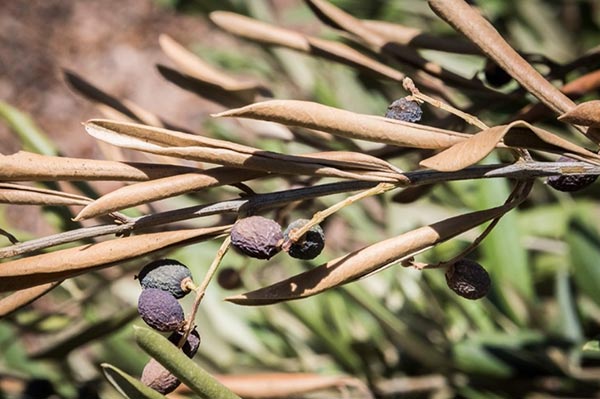Assessing the potential impact of Xylella bacteria on UK trees
Project lead(s) Jiaqi Wei I PhD Student, University of Birmingham; Lisa Ward | Forest Research; Robert Jackson | University of Birmingham
Context
Xylella fastidiosa is pathogen of global importance. The bacterium causes disease in a wide range of plant species. At least four subspecies of X. fastidiosa have been reported, each having a different host range. Native to the America’s, it has recently spread into Europe where it has caused the death of thousands of olive trees in Southern Italy. The pathogen has since been reported in Portugal, Spain, and Southern France (including Corsica). X. fastidiosa has not yet been detected in the UK, but there is considerable concern around the potential threat to the UK’s horticulture and environment including the UK’s woodlands and forests, should it establish.
Understanding the threat that the pathogen poses to UK trees is critical in an outbreak situation. Knowing which tree species are likely to be susceptible will help to inform the likely extent of spread in UK woodlands and forests and will ensure susceptible sites can be surveyed and monitored effectively. As well as understanding the susceptibility of UK trees to X. fastidiosa, having a knowledge of potentially resistant tree species may also help us understand how resilient the UK’s woodlands and forests might be in a short-term outbreak or a longer-term establishment of the bacterium.
In this PhD project, several native or naturalised tree species including Prunus species (e.g. almond and cherry) ash and oak will be studied to understand their likely reaction to X. fastidiosa infection.
Research aims and objectives
The PhD aims to improve our understanding of the following areas:
- The pathogenicity of different subspecies of X. fastidiosa on different native trees and/or naturalised trees to the United Kingdom.
- The physiological and biochemical state of healthy verses infected trees in the event of infection by X. fastidiosa.
- Finding virulence traits in the pathogen strains and resistance traits in the trees.
Project description
- Prunus, oak, and ash trees will be infected with fastidiosa and kept under both good, and drought stressed conditions to monitor the development of symptoms. Molecular methods will be used to detect and monitor the bacterium in the tees after the inoculation.
- Molecular methods (HPLS-MS and transcriptomics) will be used to understand the differing responses of healthy and infected trees to infection.
- Using sequencing of RNA to discover the genes involved in the plant defence system to bacterial infection and/or bacterial response to host colonisation.
- An new ultra-rapid detection for Xylella species will be developed.
Outputs
The project will generate the following outputs:
- An increased evidence base with respect to likely susceptibility or resistance of some native/naturalised trees to fastidiosa infection and the biochemical and physiological mechanisms behind this.
- Contributing to existing government advice by making recommendations to policy makers for fastidiosa tree management plans.
- A new ultra-rapid detection method for Xylella species which will complement existing detection tools available.
- Peer review publications describing results and other topical articles to promote results to a wider audience.

CFP research is focusing on understanding the threat of Xylella to tree species such as ash, oak and plane.
Share this project on social media
Related Projects
Our Partners
Social media
Explore
Contact
© 2022 Centre for Forest Protection. All rights reserved.


